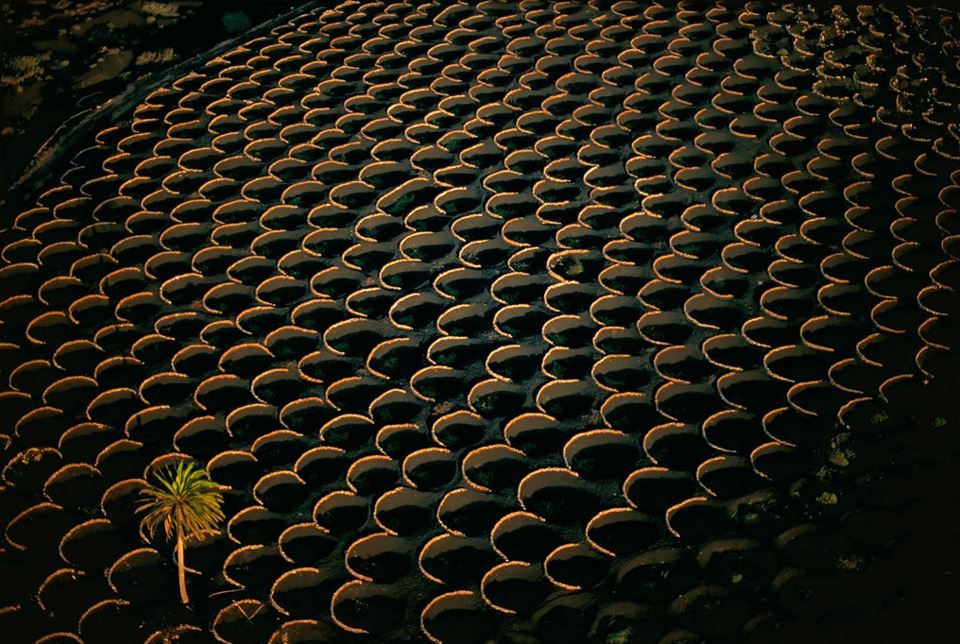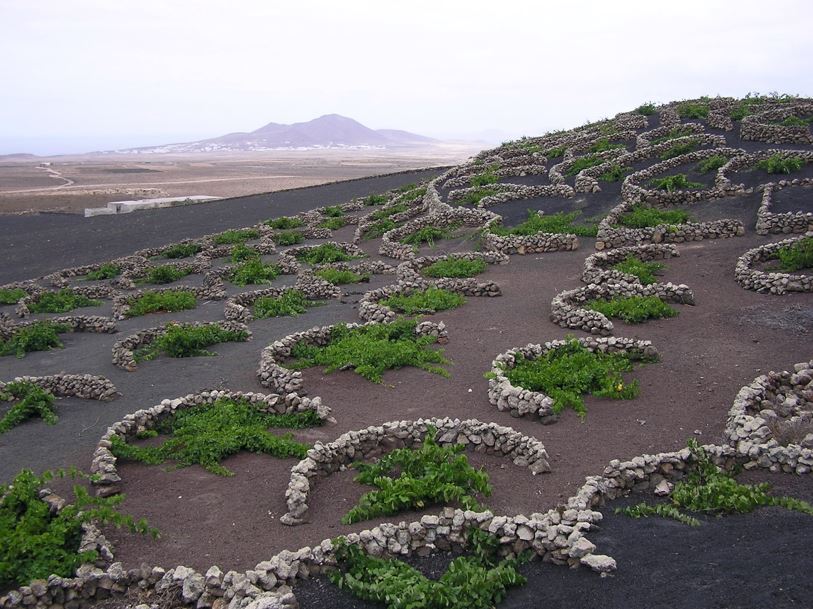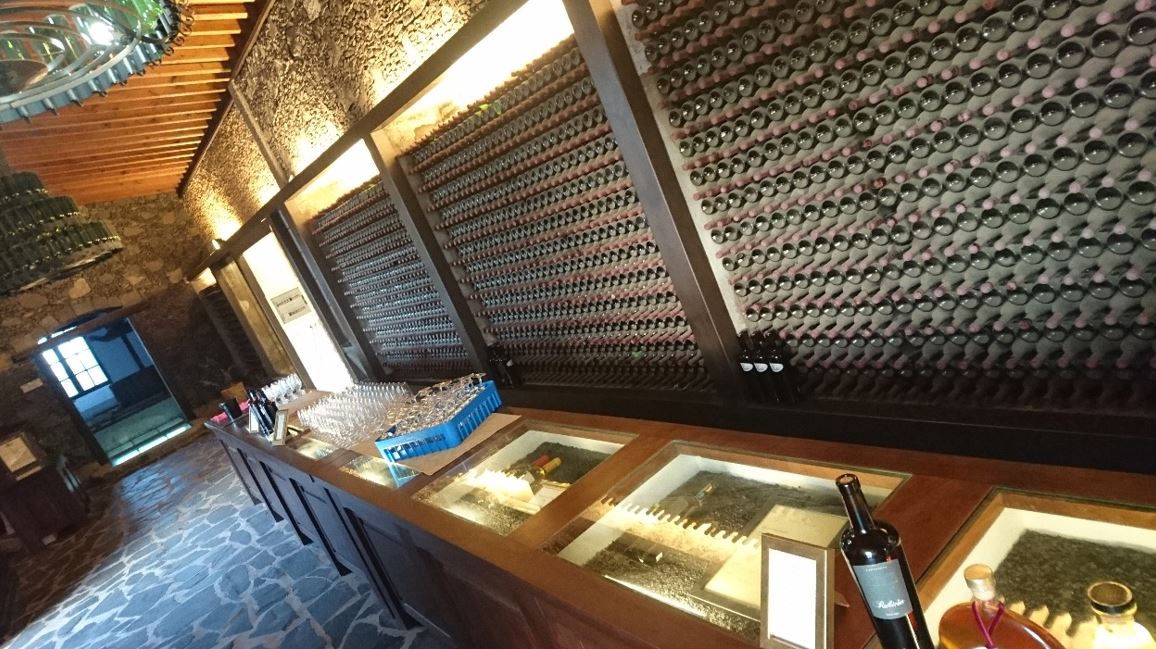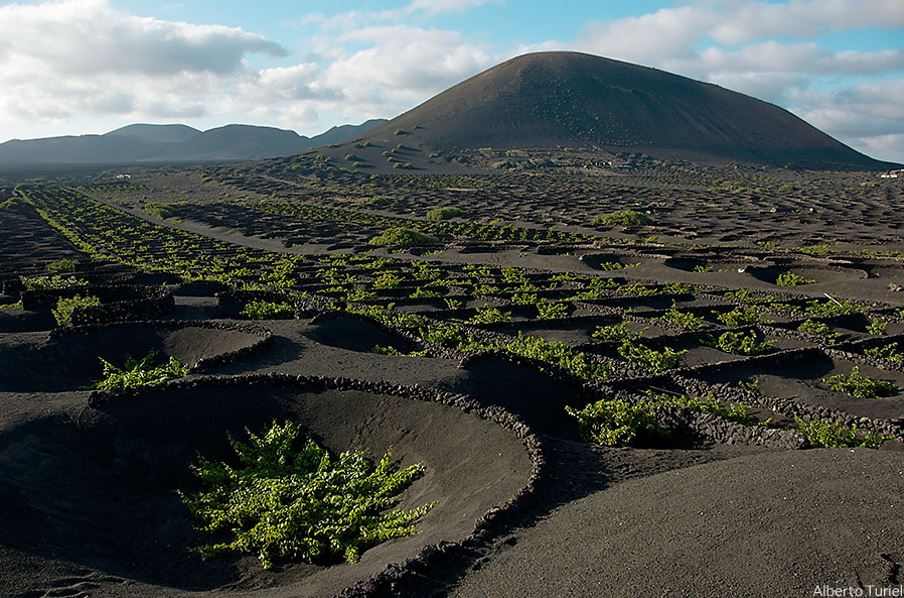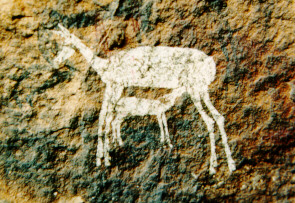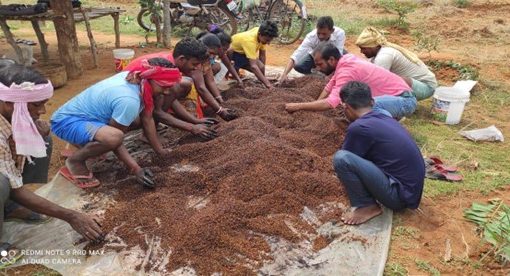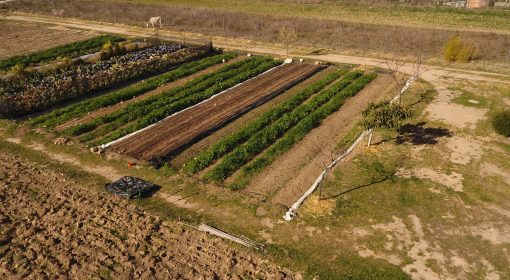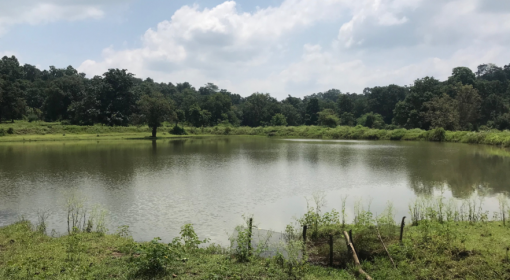by Cecilia Borgia
October 03, 2017
This story is about the ingenuity of women and men farmers in Lanzarote island of the Canary archipelago, who turned the ancestral punishment of volcanic forces and drought into a unique socio-cultural scenery: “La Geria”.
The moon appears to be the repeating pattern here: its light gazes across the singular lunar landscape forged by solidified black lava and paved by volcanic sand, while its half-moon shape is reproduced in thousands of stone crescents harbouring wine stocks along the hills.
La Geria is now a fertile wine-producing terroir scattered with half-moon shaped stone bunds, that protect the vines from the trade winds blowing incessantly from the North-east during the summer months.
Once growing cereals as their staple food, farmers of Lanzarote had to abruptly shift their farming system and lifestyle to embrace the cultivation of grapes after their fields had been destroyed by Lanzarote’s most devastating eruption: the great eruption of the Timanfaya on September 1, 1730.
Islanders were pushed to the perimeter of the island where for six years, until 1736, they endured starvation and struggle while volcanic magma, lapillus, and ashes swallowed and silenced their homes and cereal fields and covered them with a thick dark mantle.
Changing from cereal to grape cultivation was an act of extreme adaptive capacity in their strive to work with nature to maximise the productivity of agricultural land under these new extreme environmental conditions.
With an average of 100 mm per year of rainfall, water and wind are the factors limiting agriculture in Lanzarote. So how does the Geria cultivation technique enable the thriving of vines despite water scarcity and wind?
This extraordinary and unique technique combines planting vine plants in inverse cone-shaped pits that are protected by half-moon stone bunds orientated against the dominant winds. This way, wind protection is maximised and evapotranspiration minimised. Vines are rooted into fertile soil that is covered with a layer of mineral-rich volcanic ash (locally named picón) conferring the typical mineral flavour to the local white wine, the Malvasía Volcánica. But there is more to it. The volcanic ash is also a reserve of moisture for its extremely porous physical structure that captures and retains water particles, whether they fall from the sky, are suspended as dew, or glide along the lateral slopes of the pits right to the base of the wine plants.
The combination of half-moons and the mulching effect of volcanic ash prevents soil erosion, conserves moisture, supplies a large amount of minerals, minimises evaporation, and prevents the development and spread of fungi and other plant pathogens through the controlled ventilation of plants.
Finally, the black colour of the picón absorbs more solar radiation and increases soil temperature, which favours plant development and the concentration of sugars and other phenolic compounds in the grapes.
Maintaining these highly humanised lands is a delicate, labour and time intensive work as farmers have to do everything by hand or, traditionally, with the assistance of their main faming tool: the camel. Periodically, farmers have to re-shape the pits and raise the volcanic sand, as it moves downwards along the pit walls and submerges the base of the plant.
It is for good reason that farmers of Lanzarote are referred to as gardeners and carers of the landscape.
{jcomments on}
